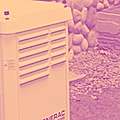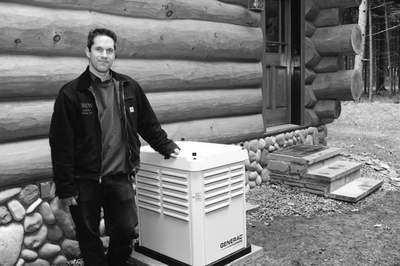- By Dawn Bricen LaMorte, LaMorte Electric
- Around Town
 Print
Print  The severe weather over the last six months has left millions of people in the dark. In many areas, particularly along the east coast, there have been multiple extended power outages. For some people these drops in power are an inconvenience but for others the consequences are much more severe.
The severe weather over the last six months has left millions of people in the dark. In many areas, particularly along the east coast, there have been multiple extended power outages. For some people these drops in power are an inconvenience but for others the consequences are much more severe. For those who have power operated in-home medical equipment such as oxygen generators, monitors, and devices with rechargeable batteries, a power outage could mean life or death. Additionally, a security system that runs off power to the house won’t work very well while the power is out. Battery backups generally last only a day. And, of course, not many of us can afford to have an entire refrigerator or freezer of food go to waste.
A generator can provide many benefits in the case of a power outage, especially your piece of mind knowing you won’t be without power for an extended period. The refrigerated food will stay cold, the pipes won’t freeze, medical equipment will operate and your home will remain comfortable allowing you to remain in a stress-free state.
If you are considering a generator for your home, there are some basics you should know. There are two types of generators that you can use for your home: a standby generator or a portable generator. A standby generator is permanently installed and runs on natural gas or propane. They have a transfer switch that allows them to start automatically during a power disruption.
As long as you have natural gas or propane, the generator will stay on until the power is restored, whether or not anyone is home. A small standby generator will power 8-10 circuits (commonly water pump, sump pump, refrigerator, furnace and a few lights and receptacles) and is the less expensive option; however, larger units can power an entire house including appliances and air conditioners.
 Brian LaMorte, Owner of LaMorte Electric, at the site of a recent home generator installation.
Brian LaMorte, Owner of LaMorte Electric, at the site of a recent home generator installation.The second option is a portable generator which will typically run a smaller number of circuits (2-6) in your house. A portable unit requires the home owner to manually activate the unit when the power drops and the generator is needed. A portable generator operates on gasoline and requires two or three gasoline fill-ups per day. This is not nearly as convenient as a standby generator, but it is less expensive and it works. Remember, generators release carbon monoxide when running and should never be operated indoors.
Regardless of the type of generator you install, be sure it is done by a reliable professional to ensure any connection to your house wiring will meet the national electric code. If not installed correctly it is possible to injure or even kill a lineman working to restore your power.
v8i3



